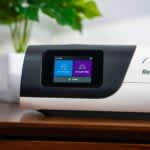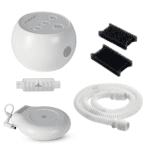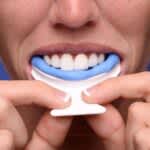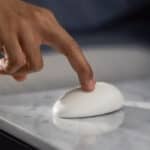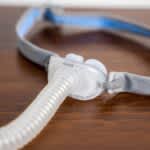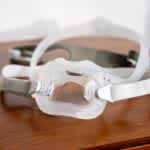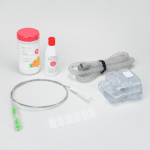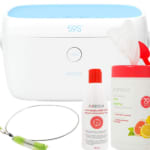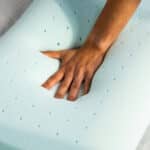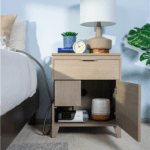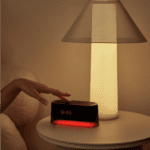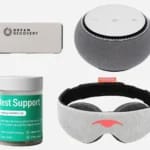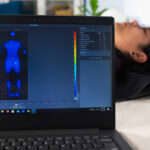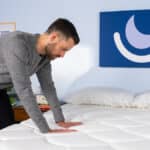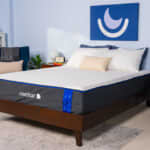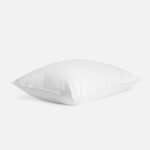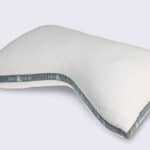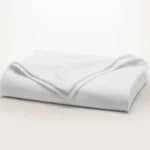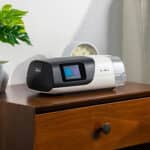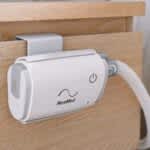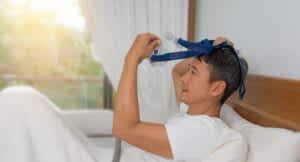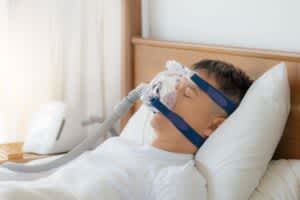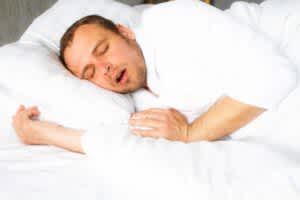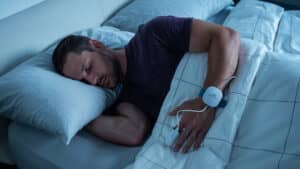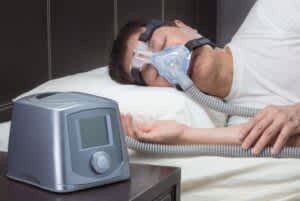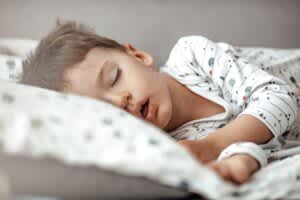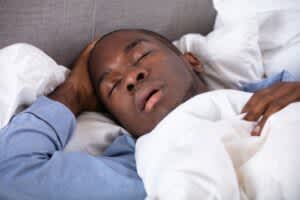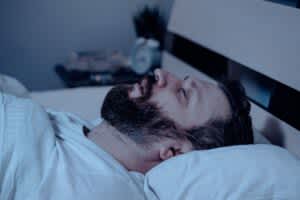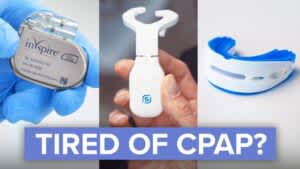Sleep apnea is a disorder in which breathing is interrupted during sleep, which prevents the body from getting the oxygen it needs. Without treatment, breathing issues impair sleep quality, diminish day-to-day functioning, and increase the risk of health problems like heart disease and high blood pressure.
Many people with sleep apnea don’t realize that their sleep is disrupted and this breathing disorder often goes undiagnosed. Fortunately, recognizing the signs of sleep apnea and getting treatment can alleviate symptoms and reduce the risk of further complications.
What Are the Symptoms of Sleep Apnea?
The primary symptom of sleep apnea is abnormal breathing during sleep. People with sleep apnea may have periods in which their breathing becomes slow, shallow, or pauses. Because many people are unaware of their nighttime breathing issues, symptoms may be first noticed by partners, caregivers, or roommates.
Other symptoms of sleep apnea include:
- Snoring
- Snorting, choking, or gasping during sleeping
- Abrupt nighttime wakings
- Waking up at night to urinate
- Restless sleep
- Waking up feeling tired or groggy
- Headaches in the morning
- Feeling sleepy throughout the day
- Irritability and mood changes
- Slowed thinking, trouble concentrating, or forgetfulness
Obstructive vs. Central Sleep Apnea Symptoms
The symptoms of obstructive sleep apnea (OSA) and central sleep apnea (CSA) overlap and neither condition can be diagnosed based only on a person’s symptoms. Doctors may take symptoms into account to eliminate other health conditions, but diagnosis of sleep apnea is based on the results of a sleep study.
OSA, the most common type of sleep apnea, is caused by a physical blockage or narrowing of the throat. During nighttime breathing disruptions, a person with OSA often tries to inhale despite their blocked or narrowed airway, sometimes causing loud snoring or choking sounds. Symptoms like gasping, dry mouth, and waking in the middle of the night are more strongly associated with OSA.
In contrast, CSA is a less common form of sleep apnea that occurs when the brain briefly stops sending the signals that trigger breathing and sleeping individuals fail to inhale properly.
Snoring? An At-Home Sleep Test May Be the Answer

Save 54% on your Sleep Test Today
Simple and convenient
- Equipment delivered to your doorstep
- One overnight test in the comfort of your own bed
Uncover sleep apnea
- Quietly collects data while you sleep
- 98% effective in detecting sleep apnea
Affordable & ships fast
- In-lab sleep tests cost ~$3,000+ (this one’s $189), HSA/FSA eligible
- Arrives in 2-4 business days
Are Sleep Apnea Symptoms the Same for Everyone?
Sleep apnea symptoms can differ from person to person. Additionally, both obstructive and central sleep apneas may be asymptomatic, which means that a person may not notice any obvious signs of nighttime breathing issues.
In mild cases of OSA, a person may have few daytime symptoms. People with moderate to severe OSA may develop more significant symptoms that interfere with their daily life, including:
- Needing regular naps
- Cutting back on daytime activities due to sleepiness
- Falling asleep frequently during the daytime
- Dozing off at inappropriate times
For people diagnosed with central sleep apnea, symptoms also depend on the type of CSA that was diagnosed. Because CSA is often related to an underlying medical issue, symptoms vary based on the condition causing breathing issues.
Sleep Apnea Tests and Diagnosis
To diagnose sleep apnea, doctors consider a person’s symptoms and medical history in addition to the results of a physical exam and sleep apnea test.
An overnight test, called polysomnography, takes place in a specialized sleep laboratory. During the test, various measurements are recorded that help doctors diagnose and assess sleep problems. Doctors can tell the difference between OSA and CSA using measurements that establish whether a person is trying to inhale during a nighttime breathing disruption.
The apnea-hypopnea index (AHI) is used to describe the number of breathing disruptions that occurred during the test. In some cases, doctors may order other tests to detect complications of sleep apnea or rule out other health conditions. For example, if a doctor suspects CSA, additional tests may be used to find the underlying cause of breathing issues.
Does Treatment Improve Sleep Apnea Symptoms?
Treatment for sleep apnea is aimed at improving breathing during sleep and bringing the body’s oxygen levels back to normal. By normalizing breathing and oxygen levels, treatments help to alleviate the symptoms of sleep apnea. Treatment options depend on an individual’s medical history, the type of sleep apnea diagnosed, its severity, and any underlying medical conditions that may be contributing to breathing difficulties.
Many treatment options are available for sleep apnea.
- Positive airway pressure therapy: Positive airway pressure (PAP) therapy uses air pressure to keep the airway open during sleep. The most common way of delivering this therapy is with continuous positive airway pressure (CPAP).
- Supplemental oxygen: People diagnosed with certain types of CSA may be given supplemental oxygen as they sleep, either alone or in combination with PAP therapy.
- Oral appliances: Oral appliances are an option for some people with OSA and work by shifting the lower jaw or pulling the tongue forward to keep the airway from becoming blocked.
- Surgery: Surgery is typically used as a second-line treatment for sleep apnea when other approaches are unsuccessful. There are a wide variety of surgeries that may be used to treat sleep apnea, which alter tissues to prevent obstructions during sleep or use an implantable medical device to stimulate breathing.
Tips for Relieving Your Sleep Apnea Symptoms
The most important step in getting relief from sleep apnea symptoms is to talk to your doctor. Treatment can help alleviate symptoms, so be sure to contact your doctor if your sleep quality is suffering or if you have daytime symptoms suggestive of sleep apnea.
Your doctor may also suggest tips for reducing sleep apnea symptoms.
- Exercise and watch your weight: If you’re overweight or obese, weight loss and regular exercise can improve your health, reduce obstructive breathing problems, and ease daytime symptoms. Your doctor can discuss dietary changes, safe ways to exercise, and other options like medications and surgery.
- Be cautious about drinking and smoking: Smoking and drinking alcohol can worsen episodes of OSA and exacerbate daytime symptoms, so doctors recommend quitting smoking and restricting alcohol consumption.
- Change your sleeping position: If breathing gets worse when sleeping on your back, changing your sleeping position may reduce the symptoms of sleep apnea. Switching sleeping positions can be challenging, though several devices are available that help people learn to sleep in a new position.
- Review your medications: Both OSA and CSA can be triggered or exacerbated by certain medications such as benzodiazepines and some opiates. If you’re on medication and have sleep apnea symptoms, consider meeting with your doctor to review your medications use.
Tips for Caregivers
Caregivers can play an important role in helping people notice their sleep apnea symptoms. Keep record of symptoms you observe and help individuals talk to their doctor about sleep issues. Following any diagnosis, it can take time to adjust to treatments for sleep apnea, so caregivers can help people adhere to the recommended sleep apnea treatments and resolve challenges that arise.
References
Ask the Sleep Doctor
Have questions about sleep? Submit them here! We use your questions to help us decide topics for articles, videos, and newsletters. We try to answer as many questions as possible. You can also send us an email. Please note, we cannot provide specific medical advice, and always recommend you contact your doctor for any medical matters.

